Qi Pang
Communication Bounds for the Distributed Experts Problem
Jan 06, 2025Abstract:In this work, we study the experts problem in the distributed setting where an expert's cost needs to be aggregated across multiple servers. Our study considers various communication models such as the message-passing model and the broadcast model, along with multiple aggregation functions, such as summing and taking the $\ell_p$ norm of an expert's cost across servers. We propose the first communication-efficient protocols that achieve near-optimal regret in these settings, even against a strong adversary who can choose the inputs adaptively. Additionally, we give a conditional lower bound showing that the communication of our protocols is nearly optimal. Finally, we implement our protocols and demonstrate empirical savings on the HPO-B benchmarks.
Attacking LLM Watermarks by Exploiting Their Strengths
Feb 25, 2024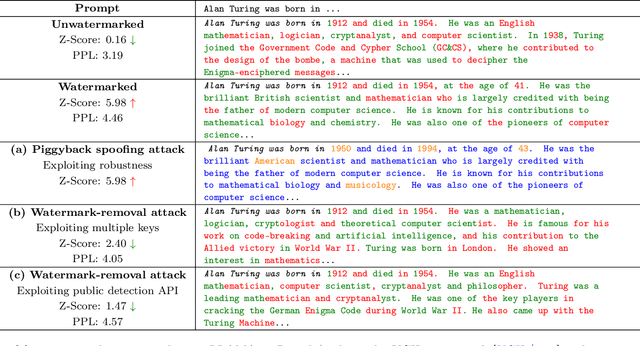



Abstract:Advances in generative models have made it possible for AI-generated text, code, and images to mirror human-generated content in many applications. Watermarking, a technique that aims to embed information in the output of a model to verify its source, is useful for mitigating misuse of such AI-generated content. However, existing watermarking schemes remain surprisingly susceptible to attack. In particular, we show that desirable properties shared by existing LLM watermarking systems such as quality preservation, robustness, and public detection APIs can in turn make these systems vulnerable to various attacks. We rigorously study potential attacks in terms of common watermark design choices, and propose best practices and defenses for mitigation -- establishing a set of practical guidelines for embedding and detection of LLM watermarks.
Byzantine-Robust Federated Learning with Optimal Statistical Rates and Privacy Guarantees
May 24, 2022


Abstract:We propose Byzantine-robust federated learning protocols with nearly optimal statistical rates. In contrast to prior work, our proposed protocols improve the dimension dependence and achieve a tight statistical rate in terms of all the parameters for strongly convex losses. We benchmark against competing protocols and show the empirical superiority of the proposed protocols. Finally, we remark that our protocols with bucketing can be naturally combined with privacy-guaranteeing procedures to introduce security against a semi-honest server. The code for evaluation is provided in https://github.com/wanglun1996/secure-robust-federated-learning.
Attacking Vertical Collaborative Learning System Using Adversarial Dominating Inputs
Jan 08, 2022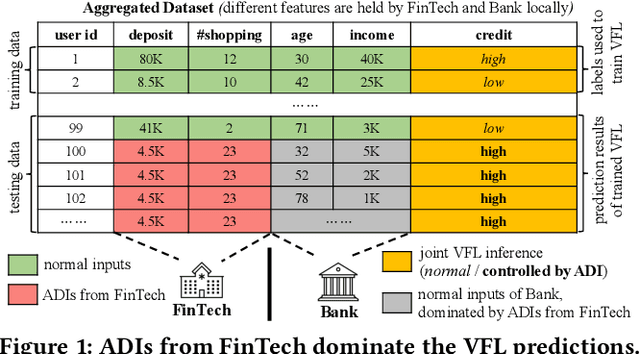
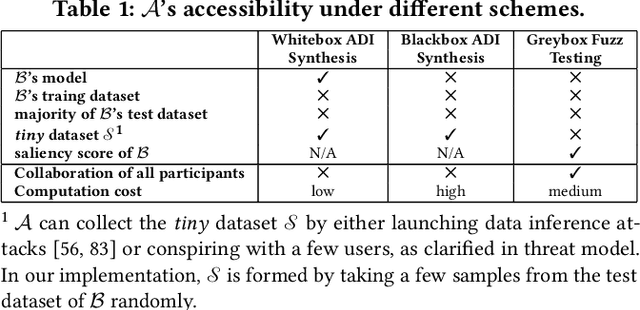
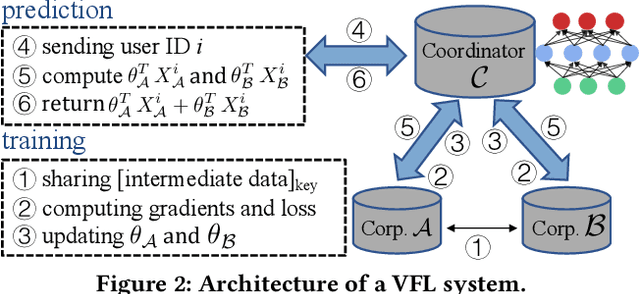

Abstract:Vertical collaborative learning system also known as vertical federated learning (VFL) system has recently become prominent as a concept to process data distributed across many individual sources without the need to centralize it. Multiple participants collaboratively train models based on their local data in a privacy-preserving manner. To date, VFL has become a de facto solution to securely learn a model among organizations, allowing knowledge to be shared without compromising privacy of any individual organizations. Despite the prosperous development of VFL systems, we find that certain inputs of a participant, named adversarial dominating inputs (ADIs), can dominate the joint inference towards the direction of the adversary's will and force other (victim) participants to make negligible contributions, losing rewards that are usually offered regarding the importance of their contributions in collaborative learning scenarios. We conduct a systematic study on ADIs by first proving their existence in typical VFL systems. We then propose gradient-based methods to synthesize ADIs of various formats and exploit common VFL systems. We further launch greybox fuzz testing, guided by the resiliency score of "victim" participants, to perturb adversary-controlled inputs and systematically explore the VFL attack surface in a privacy-preserving manner. We conduct an in-depth study on the influence of critical parameters and settings in synthesizing ADIs. Our study reveals new VFL attack opportunities, promoting the identification of unknown threats before breaches and building more secure VFL systems.
MDPFuzzer: Finding Crash-Triggering State Sequences in Models Solving the Markov Decision Process
Dec 12, 2021
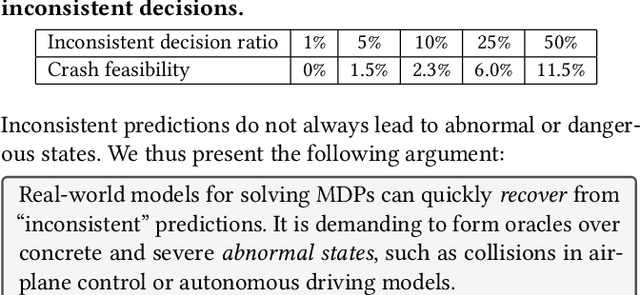
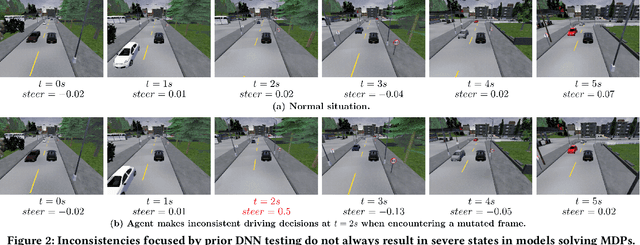

Abstract:The Markov decision process (MDP) provides a mathematical framework for modeling sequential decision-making problems, many of which are crucial to security and safety, such as autonomous driving and robot control. The rapid development of artificial intelligence research has created efficient methods for solving MDPs, such as deep neural networks (DNNs), reinforcement learning (RL), and imitation learning (IL). However, these popular models for solving MDPs are neither thoroughly tested nor rigorously reliable. We present MDPFuzzer, the first blackbox fuzz testing framework for models solving MDPs. MDPFuzzer forms testing oracles by checking whether the target model enters abnormal and dangerous states. During fuzzing, MDPFuzzer decides which mutated state to retain by measuring if it can reduce cumulative rewards or form a new state sequence. We design efficient techniques to quantify the "freshness" of a state sequence using Gaussian mixture models (GMMs) and dynamic expectation-maximization (DynEM). We also prioritize states with high potential of revealing crashes by estimating the local sensitivity of target models over states. MDPFuzzer is evaluated on five state-of-the-art models for solving MDPs, including supervised DNN, RL, IL, and multi-agent RL. Our evaluation includes scenarios of autonomous driving, aircraft collision avoidance, and two games that are often used to benchmark RL. During a 12-hour run, we find over 80 crash-triggering state sequences on each model. We show inspiring findings that crash-triggering states, though look normal, induce distinct neuron activation patterns compared with normal states. We further develop an abnormal behavior detector to harden all the evaluated models and repair them with the findings of MDPFuzzer to significantly enhance their robustness without sacrificing accuracy.
Automated Side Channel Analysis of Media Software with Manifold Learning
Dec 10, 2021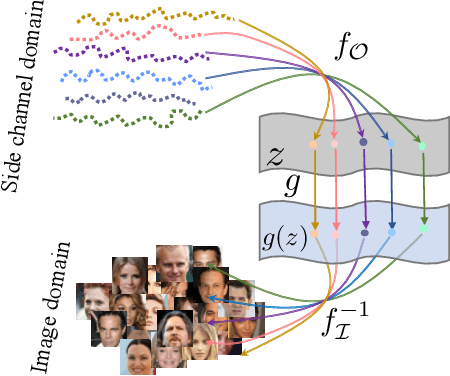

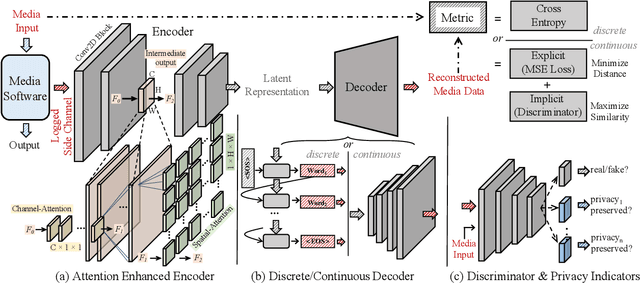
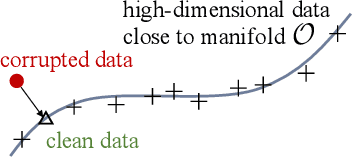
Abstract:The prosperous development of cloud computing and machine learning as a service has led to the widespread use of media software to process confidential media data. This paper explores an adversary's ability to launch side channel analyses (SCA) against media software to reconstruct confidential media inputs. Recent advances in representation learning and perceptual learning inspired us to consider the reconstruction of media inputs from side channel traces as a cross-modality manifold learning task that can be addressed in a unified manner with an autoencoder framework trained to learn the mapping between media inputs and side channel observations. We further enhance the autoencoder with attention to localize the program points that make the primary contribution to SCA, thus automatically pinpointing information-leakage points in media software. We also propose a novel and highly effective defensive technique called perception blinding that can perturb media inputs with perception masks and mitigate manifold learning-based SCA. Our evaluation exploits three popular media software to reconstruct inputs in image, audio, and text formats. We analyze three common side channels - cache bank, cache line, and page tables - and userspace-only cache set accesses logged by standard Prime+Probe. Our framework successfully reconstructs high-quality confidential inputs from the assessed media software and automatically pinpoint their vulnerable program points, many of which are unknown to the public. We further show that perception blinding can mitigate manifold learning-based SCA with negligible extra cost.
Enhancing Deep Neural Networks Testing by Traversing Data Manifold
Dec 03, 2021



Abstract:We develop DEEPTRAVERSAL, a feedback-driven framework to test DNNs. DEEPTRAVERSAL first launches an offline phase to map media data of various forms to manifolds. Then, in its online testing phase, DEEPTRAVERSAL traverses the prepared manifold space to maximize DNN coverage criteria and trigger prediction errors. In our evaluation, DNNs executing various tasks (e.g., classification, self-driving, machine translation) and media data of different types (image, audio, text) were used. DEEPTRAVERSAL exhibits better performance than prior methods with respect to popular DNN coverage criteria and it can discover a larger number and higher quality of error-triggering inputs. The tested DNN models, after being repaired with findings of DEEPTRAVERSAL, achieve better accuracy
You Can't See the Forest for Its Trees: Assessing Deep Neural Network Testing via NeuraL Coverage
Dec 03, 2021



Abstract:This paper summarizes eight design requirements for DNN testing criteria, taking into account distribution properties and practical concerns. We then propose a new criterion, NLC, that satisfies all of these design requirements. NLC treats a single DNN layer as the basic computational unit (rather than a single neuron) and captures four critical features of neuron output distributions. Thus, NLC is denoted as NeuraL Coverage, which more accurately describes how neural networks comprehend inputs via approximated distributions rather than neurons. We demonstrate that NLC is significantly correlated with the diversity of a test suite across a number of tasks (classification and generation) and data formats (image and text). Its capacity to discover DNN prediction errors is promising. Test input mutation guided by NLC result in a greater quality and diversity of exposed erroneous behaviors.
F2ED-Learning: Good Fences Make Good Neighbors
Oct 02, 2020


Abstract:In this paper, we present F2ED-Learning, the first federated learning protocol simultaneously defending against both a semi-honest server and Byzantine malicious clients. Using a robust mean estimator called FilterL2, F2ED-Learning is the first FL protocol providing dimension-free estimation error against Byzantine malicious clients. Besides, F2ED-Learning leverages secure aggregation to protect the clients from a semi-honest server who wants to infer the clients' information from the legitimate updates. The main challenge stems from the incompatibility between FilterL2 and secure aggregation. Specifically, to run FilterL2, the server needs to access individual updates from clients while secure aggregation hides those updates from it. We propose to split the clients into shards, securely aggregate each shard's updates and run FilterL2 on the updates from different shards. The evaluation shows that F2ED-Learning consistently achieves optimal or sub-optimal performance under three attacks among five robust FL protocols.
Towards practical differentially private causal graph discovery
Jun 15, 2020


Abstract:Causal graph discovery refers to the process of discovering causal relation graphs from purely observational data. Like other statistical data, a causal graph might leak sensitive information about participants in the dataset. In this paper, we present a differentially private causal graph discovery algorithm, Priv-PC, which improves both utility and running time compared to the state-of-the-art. The design of Priv-PC follows a novel paradigm called sieve-and-examine which uses a small amount of privacy budget to filter out "insignificant" queries, and leverages the remaining budget to obtain highly accurate answers for the "significant" queries. We also conducted the first sensitivity analysis for conditional independence tests including conditional Kendall's tau and conditional Spearman's rho. We evaluated Priv-PC on 4 public datasets and compared with the state-of-the-art. The results show that Priv-PC achieves 10.61 to 32.85 times speedup and better utility.
 Add to Chrome
Add to Chrome Add to Firefox
Add to Firefox Add to Edge
Add to Edge